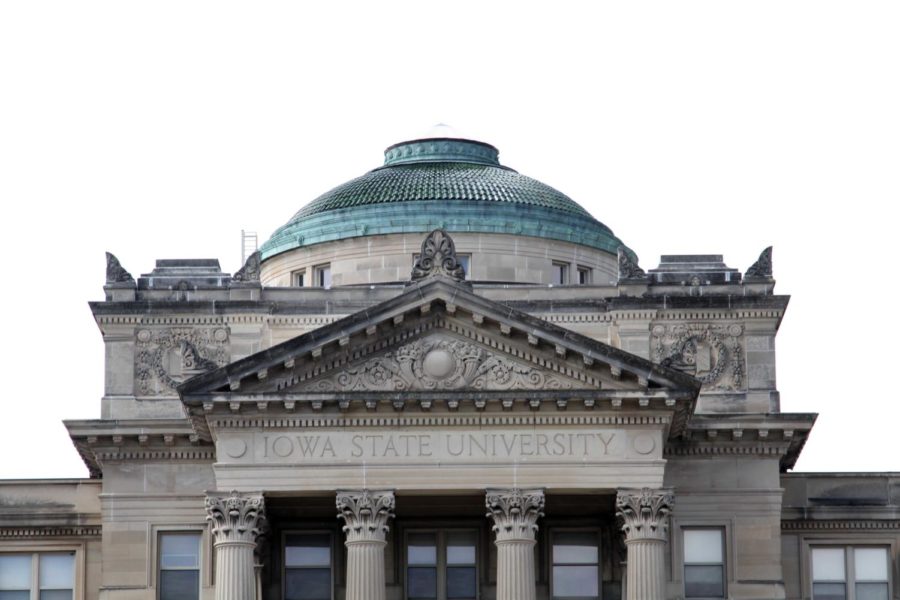Government should not be in coin business with Wal-Mart
February 21, 2000
Remember the Susan B. Anthony dollar? Well, it’s back, sort of.
The new dollar coin is out and features a gold color and the face of Sacagawea, the Shoshone woman who served as a guide and interpreter to the Lewis and Clark expedition despite being pregnant and giving birth along the way.
The new dollar coin won’t be released into circulation until March 1, but you can already find it at 3,000 Wal-Mart and Sam’s Club locations as well as in every 2000th box of Cheerios if you’re lucky. Coin enthusiasts have been lining up waiting for stores to open, forcing the U.S. Mint to put production into overdrive.
These special deals with Wal-Mart and General Mills are very unfair to other businesses who cannot get their hands on the coins.
The disclaimer is that the coins are available to the public directly from the U.S. Mint on their Web site.
So, I paid a visit to the Mint’s Web site. The coins are available in rolls of 25 and bags of 2000. A roll costs $35.50, and a bag costs $2,190. Oh, and if you phone or fax your order tack on another $3.95. Seems like a lot of postage to me. Then you have to wait 6-8 weeks, by which time you could just as easily go to the bank.
There is a reason for the Wal-Mart deal. The Susan B. Anthony dollar never really caught on. The mint stamped 900 million in 1979 and 1980, but for the most part they sat around in government vaults. People didn’t like them because they were easily confused with the quarter and were perceived as ugly and irritating to use. Philip N. Diehl, director of the mint, refers to it as the “Edsel of American coinage.”
In 1997 Congress passed legislation that required the Mint to produce a new dollar coin in 2000. Despite its unpopularity, the reserve supply of Anthony dollars diminished to nearly none in the past 20 years due to demand created by vending machines, subway turnstiles and tollbooths. The demand has been so great that more Anthony dollars were minted at the end of 1999.
The new coin is the same size and weight and has the same electromagnetic properties as the Anthony dollar, so they can be used interchangeably. It is gold in color and has no ridges on the edge to distinguish it from the quarter.
Diehl has been on a mission to make coins cool since being hired in 1994, and he is determined to prevent the Sacagawea coin from suffering the same fate as its predecessor.
Diehl was formerly a Dallas businessman and an aide to former treasury secretary Lloyd Bentsen. He has improved the Mint’s image among coin collectors who have long complained about customer service. He is also pushing the Mint into the age of modern marketing. Diehl orchestrated the new 50 states quarters and signed on Kermit the Frog as a spokesman. Market surveys indicate that 90 million people are likely to collect the quarters.
As much as I like to see Kermit the Frog working, I thought it was a waste of money to advertise quarters, something everyone in the United States uses every day. But it turns out that the Mint is big money. According to the Washington Post, the Mint pulls in $2.5 billion a year; $1.1 billion is profit. The Mint’s 44 percent profit margin puts other big moneymakers like Microsoft (31 percent) to shame.
The Sacagawea coins cost in the neighborhood of 10 to 15 cents, but the mint then turns around and sells them for a dollar.
In this context it makes perfect sense why the government wants us all to horde quarters and dollar coins. It even makes the $45 million the Mint plans to spend on a Sacagawea advertising blitz pretty reasonable.
Unfortunately, Diehl’s business savvy has led him to overstep his bounds. Allowing Wal-Mart to be an exclusive carrier of the coin is admittedly very clever and an excellent business idea.
However, the Mint is part of the government, and it should not show favoritism to private business.
Many small-business owners have tried to get their hands on the coins but are turned away by banks who don’t have any.
Wal-Mart is notorious for entering small towns and selling items below cost to run all of the mom-and-pop industries out of business. Small businesses are the backbone of the U.S. economy, so it is especially bad for the government to join in any ventures with a nefarious business crusher that has destroyed small-town culture.
The government contracts out jobs all of the time, but such jobs are given to specialized companies who offer the taxpayer the best deal. As far as I can tell, the coin deal has been a handout to Wal-Mart, a company that certainly doesn’t need any government assistance and should probably be prosecuted for some of their tactics.
Generating hype for the coin by putting it in General Mills cereal boxes is questionable, but there are relatively few companies that make breakfast cereal, and there’s no guarantee that you will get a coin.
Every retail store and restaurant in the country uses coinage every day. Why one business should be picked out above all others by a government institution is entirely beyond me, especially when demand for the dollar coin is already on the upswing.
Erik Hoversten is a senior in math from Eagan, Minn.
















